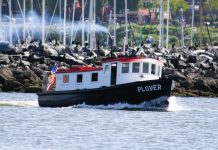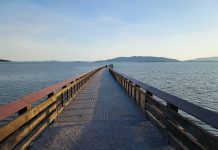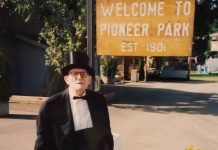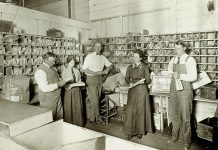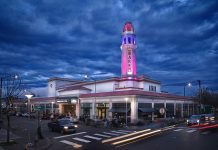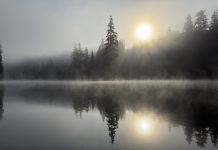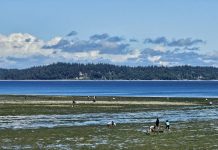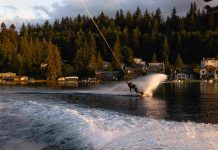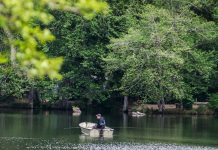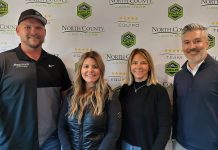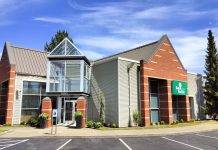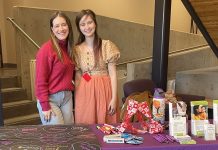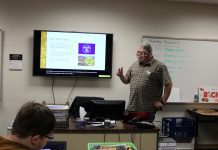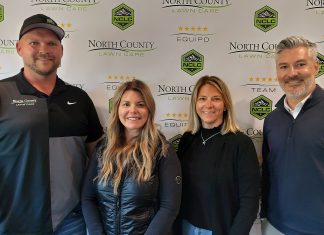
By Stacee Sledge

Chuck Nafziger, president of the Northwest Mushroomers Association, wasn’t always so knowledgeable about mushrooms.
“I moved up from Seattle about 10 years ago – I’m a city boy gone feral,” he says, laughing. “I’m living out in the woods and really enjoying it. It’s something I always wanted to do.”
When Nafziger first relocated to Skagit County, he looked around his four acres and wanted to understand what he saw.
“There were mushrooms around, but I didn’t even see them,” he says. “My mind didn’t register on them because I didn’t know anything about them.”
Gradually, people he met in the area began to point out Nafziger’s mushrooms. “A friend gave me two David Arora books and said, ‘Why don’t you try to ID some of them?’”
For a year, Nafziger studied mushrooms; he thought he might even have identified one correctly. He heard about the Bellingham Wild Mushroom Show and took three mushroom samples to be identified.
“I found out that the two I couldn’t identify were edible,” he says, “and the other I had identified correctly.”
Nafziger began to work with the club – eventually becoming its president.
The Northwest Mushroomers Association has been a mainstay around Bellingham, guiding locals as they identify mushrooms, for more than 25 years.
“It’s not just a scientific club,” Nafziger says of the association. “It’s for people with all sorts of interests in mycology – from art to eating to studying and appreciating the wonders of nature.”
Anyone interested in improving their mushroom identification skills can learn more about joining the Northwest Mushroomers Association at its website.
As Nafziger learned more about mushrooms through the group, he began going on more forays, and eventually participated in shows.
“A mushroom mentor came into my life and taught me so much,” Nafziger says. “He enjoyed that I was curious and willing to thrash through the woods and find stuff.”

It remains one of his favorite activities. “You find out what’s really out there,” he says.
And what that is, according to Nafziger, is a whole other kingdom.
“It’s quite mysterious,” he says, “because it’s mostly underground or inside of trees. And then it fruits, but you only see the mushrooms. You don’t see the body of the fungi; its equivalent in the plant kingdom would be seeing flowers of a plant without ever seeing the leaves and stem.”
Adding to the mystery is the elusiveness of certain varieties from year to year, depending on the weather.
When asked about the best spots in Whatcom County to forage, Nafziger laughs.
“Everyone’s going to have their favorite place,” he says. “But if you ask a mushroomer – and this is law – the answer is simply going to be ‘in the woods.’ You’re not allowed to say any more than that.”
He will say that one can look pretty much anywhere in our area and find mushrooms of many different kinds.
Nafziger recommends our state parks as a great starting point. “You find edible mushrooms right around campsites,” he says. “And any of the trails around here, especially this time of year, you’re going to find mushrooms you can see from the trail.”
Naturally, most club members enjoy eating mushrooms – and know the importance of being certain that a foraged mushroom is edible and not poisonous.
It’s currently chanterelle season in our neck of the woods, but Nafziger has only found one so far. “I’ve found so many others, though, that it’s just incredible,” he says.
The night before we spoke, he and partner Jill Emerson lit a bonfire and enjoyed a variety of mushrooms they’d found themselves.

“We had Agericus campestris, the Meadow Mushroom,” Nafziger says, “which we found out in our garden.” They also had some “monster” oyster mushrooms, Pleurotus pulminarea, found after a friend tipped them off to a local tree hosting dinner-plate-sized specimens. The couple cooked one of those over the open fire, as well. They rounded out the trio of fungi with a Shaggy Parasol, or Chlorophyllum olivieri.
Nafziger offers a safety tip, “If you haven’t tried a species of mushroom before, eat only one species at a sitting on the odd chance that you have a personal adverse reaction to a given species. Like food allergies, it is rare, but it happens.”
“It’s very important to cook all wild mushrooms,” Nafziger continues. “Over an open fire is just fine, in one of those hamburger squeezers. It was like eating steak! These were big, and they were really good.”
Following is a recipe from Chuck Nafziger for one of his favorite dishes to make with foraged mushrooms:
I don’t like slimy mushrooms, so I dry sauté any moist mushrooms until they quit steaming and start to brown. It’s often necessary to squeeze them between the hot pan and my spatula to remove the excess moisture.
Many people who are used to protecting vegetables from too much heat are hesitant to properly dry sauté mushrooms. Mushrooms are not vegetables; the damp ones are much improved in both taste and texture by a long, patient, dry sauté (medium heat, no oil).
Heavy cooking makes them more digestible and, according to many, does not lower their food value.
Here is a recipe for a casserole I have taken to several potlucks. It has always gone over well and I have gotten many compliments, along with a couple of rave reviews.
I got the basic recipe from the magazine Lithuanian Heritage, to which I subscribe. I am Lithuanian on my mother’s side.
As a kid, I did not like mushrooms, I did not eat them and did not pay attention to them, maybe luckily. At the merest mention of mushrooms to my Aunt Grace on my father’s side, she stridently replies, “Your mother used to try to tell poison mushrooms from ones you can eat by seeing if they would tarnish silver. That doesn’t work! We are lucky she did not kill us all!”
Since I have started gathering my own edibles and enjoying eating them I use better methods of identification. I have a small library of books and lots of mushrooming friends; I trust the saner ones.
Here is the recipe from the magazine with a few of my additions:
Mushroom Bake (gryby apkepas)
1 pound medium fresh mushrooms
2 Tbsp. butter
1/3 cup minced onion
1Tbsp. flour
1/2 tsp. salt
1/4 tsp. pepper
1 cup sour cream
1/2 cup bread crumbs
3 cloves of garlic
herbs to suit your taste
Wipe mushrooms with damp cloth. Leave them whole. If large, slice in half lengthwise, through head and stem or into large bite sized pieces.
Dry sauté if necessary.
Melt butter in skillet. Add onions and mushrooms.
Simmer, covered, until onions are transparent, about 10 minutes.
Blend sour cream with flour, seasonings, herbs and diced garlic. Pour over mushrooms in shallow oven-proof dish. Sprinkle with bread crumbs, dot with butter.
Bake in preheated 375 degree F oven 10 to 15 minutes, until top is brown. Serve hot. Makes 4 servings.
I do not measure much, and usually make about three times the above recipe – that’s all the mushrooms my large frying pan can hold for the dry sauté.







